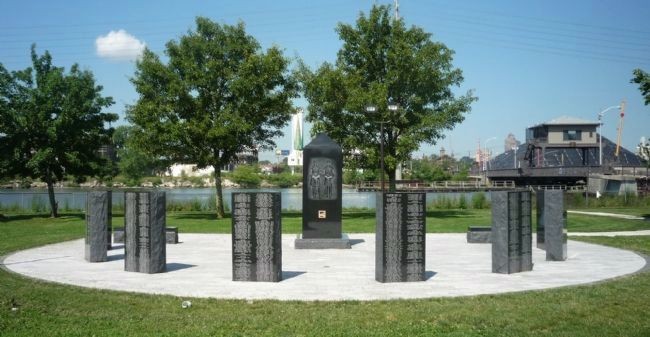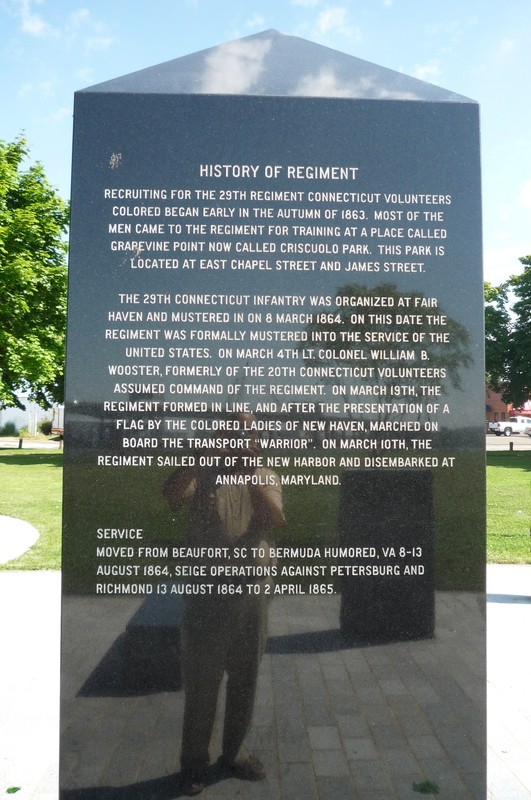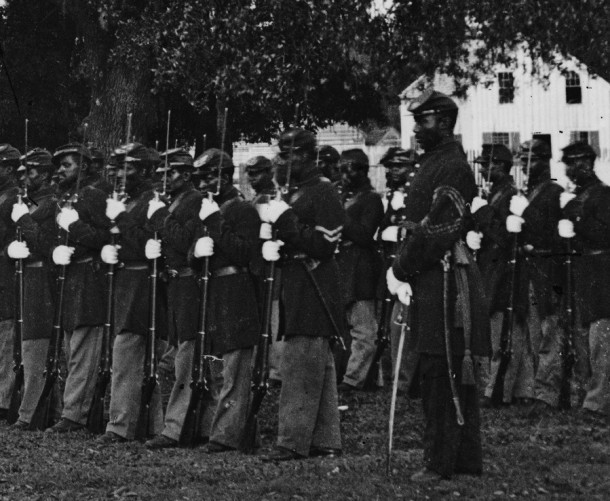Connecticut Twenty-Ninth Colored Regiment Memorial
Introduction
Text-to-speech Audio
Images
The Connecticut Twenty-Ninth Colored Regiment, C. V. Infantry Memorial

South side of the memorial obelisk, telling the history of the 29th Regiment

Detailed view of the 29th Regiment Connecticut Volunteers, Beaufort, South Carolina - Library of Congress, Prints and Photographs Division

29th Regiment Connecticut Volunteers, Beaufort, South Carolina – Library of Congress, Prints and Photographs Division

Backstory and Context
Text-to-speech Audio
History of the 29th Regiment
During the first two years of the Civil War, few white Northerners supported the enlistment of African American soldiers. Reflecting the racial prejudices of the era, few whites believed that African Americans possessed the intelligence, discipline, or valor required to be good soldiers. Had more political leaders looked towards history, however, they would have seen that many African American men exhibited these characteristics while serving in the Revolutionary War-both for the American Patriots as well as the British.
As the war continued and the Union army was running short on manpower, losing tens of thousands of men in those first two years. A draft became inevitable, though intensely unpopular. Following the Emancipation Proclamation in 1863, President Lincoln and the United States Department of War issued General Order No. 143, which established the Bureau of Colored Troops.
By November of that year, two esteemed New Haven soldiers, Colonel Dexter R. Wright and Colonel Benjamin S. Pardee, proposed a bill to the governor to create a Colored Regiment. By November, Connecticut Governor William A. Buckingham authorized the bill, and by January 1864, more than 1,200 men flocked to military training in Fair Haven as part of the 29th Regiment (and 400 more for the 30th Regiment).
Famed abolitionist Frederick Douglass gave a speech to the soldiers that January, saying:
You are pioneers of the liberty of your race. With the United States cap on your head, the United States eagle on your belt, the United States musket on your shoulder, not all the powers of darkness can prevent you from becoming American citizens. And not for yourselves alone are you marshaled—you are pioneers—on you depends the destiny of four millions of the colored race in this country. If you rise and flourish, we shall rise and flourish. If you win freedom and citizenship, we shall share your freedom and citizenship.1
By March, the 29th Colored Regiment was mustered into service, first serving guard and picket duty before heading to the siege lines in Virgina (August 1864). After numerous smaller battles between Petersburg and Richmond, the Confederate lines finally broke in 1865; Richmond fell soon after, and the 29th Regiment was among the first to enter the Confederate capital.2
